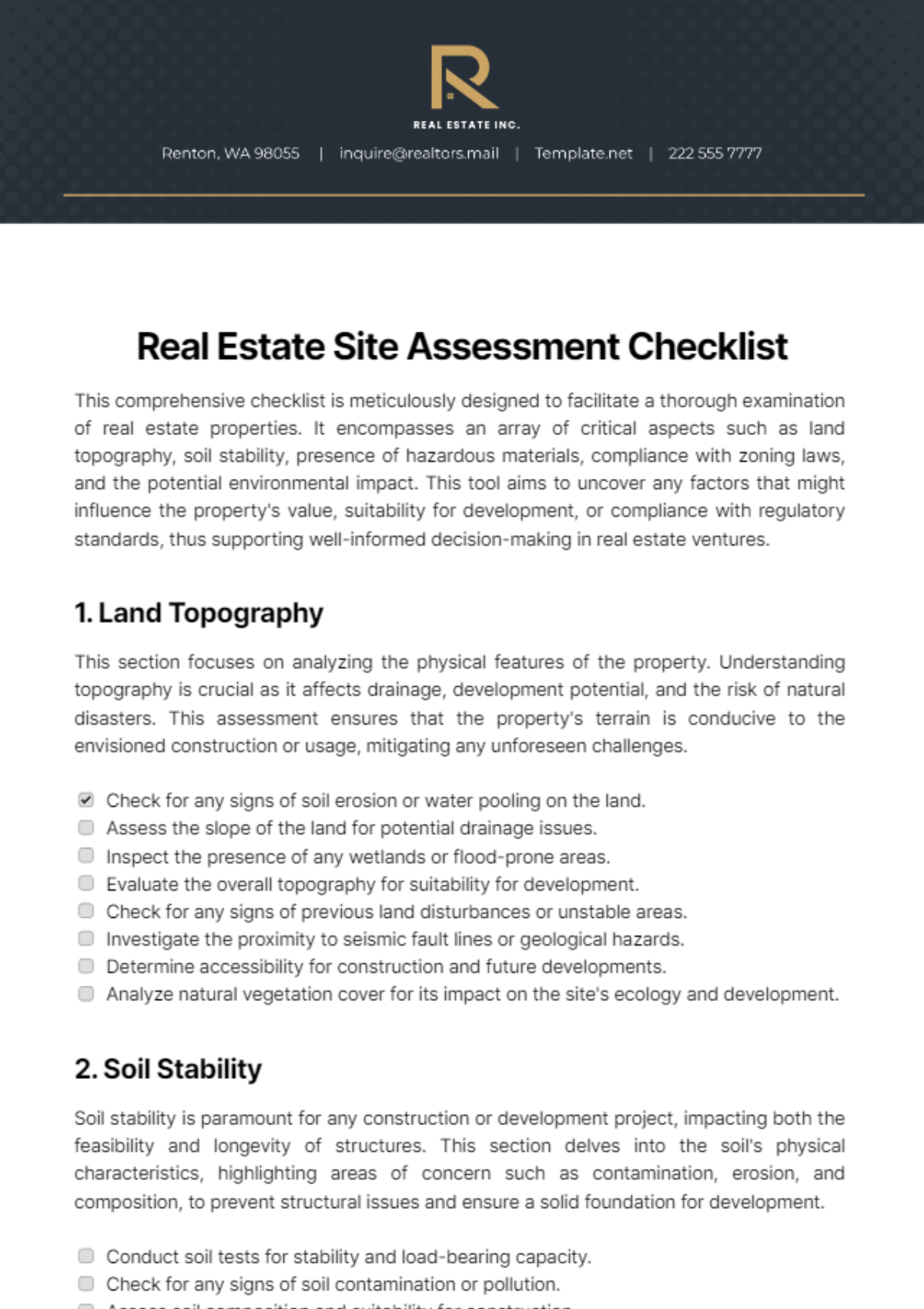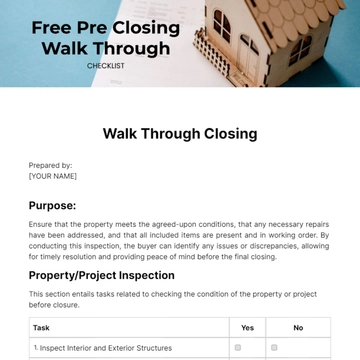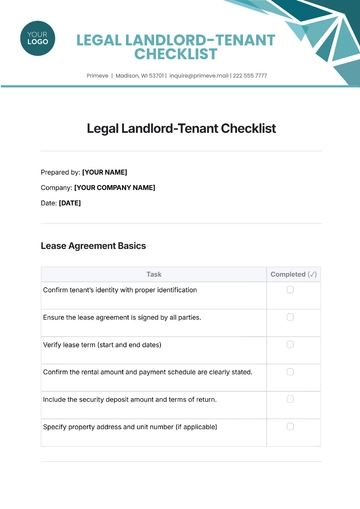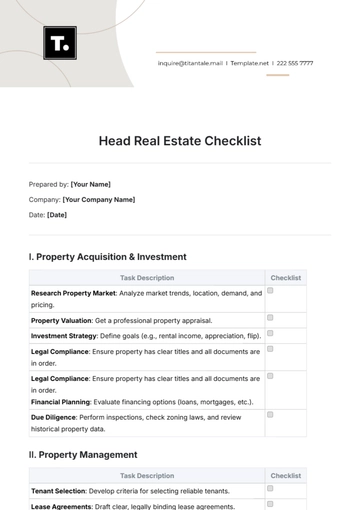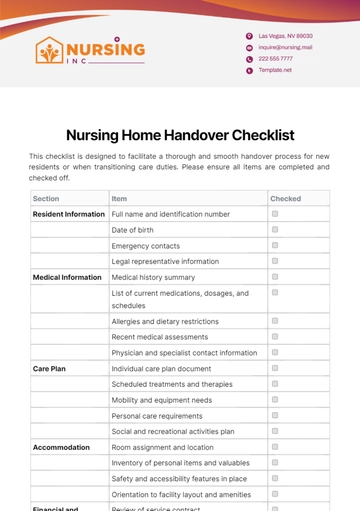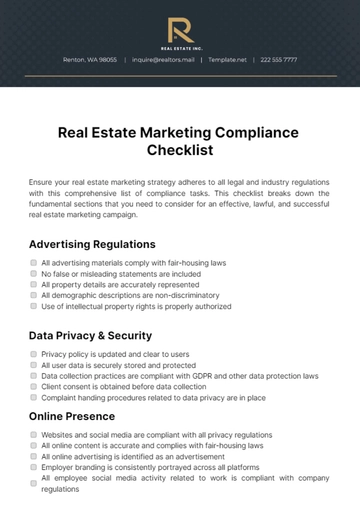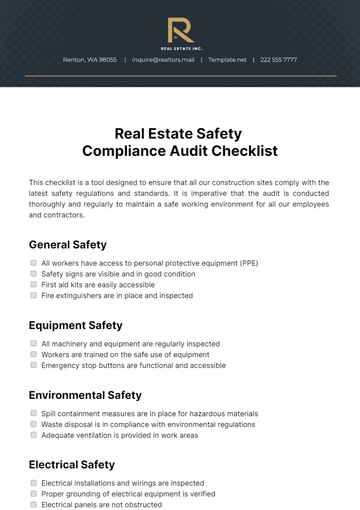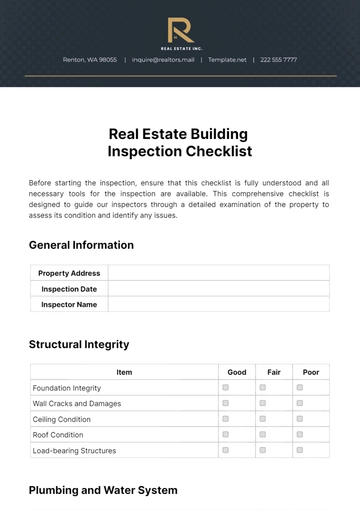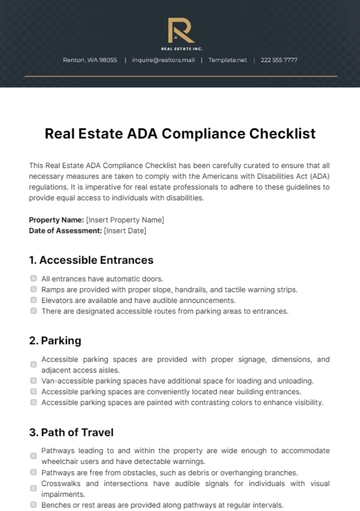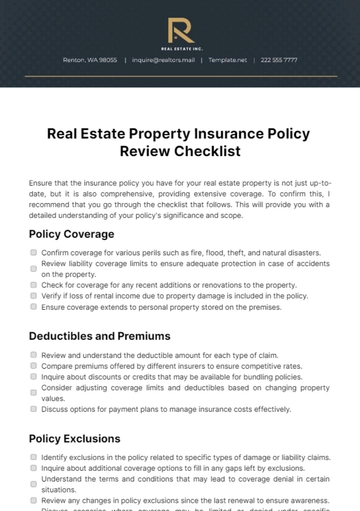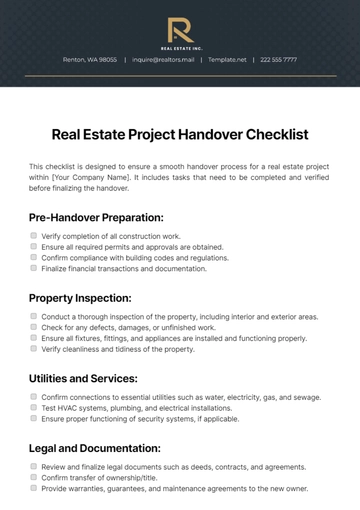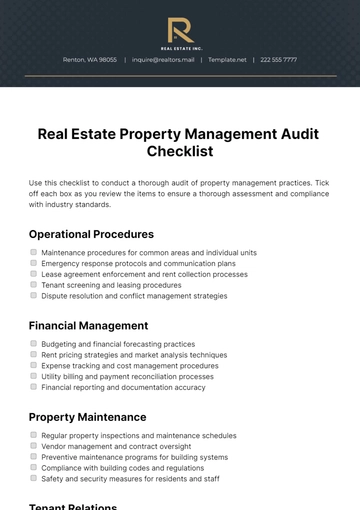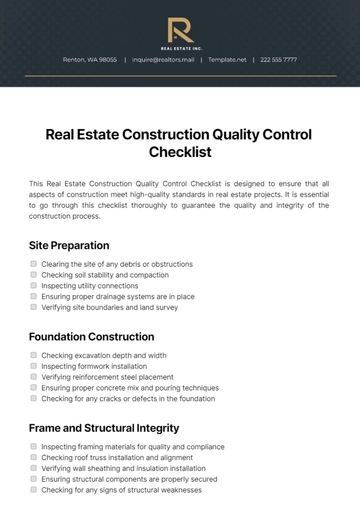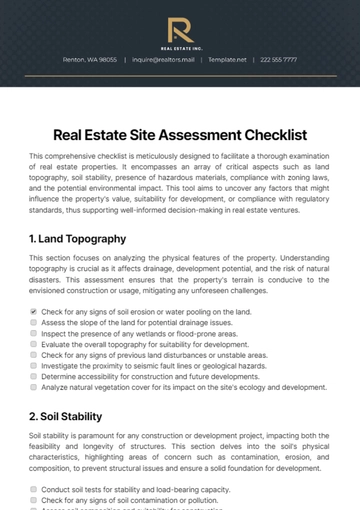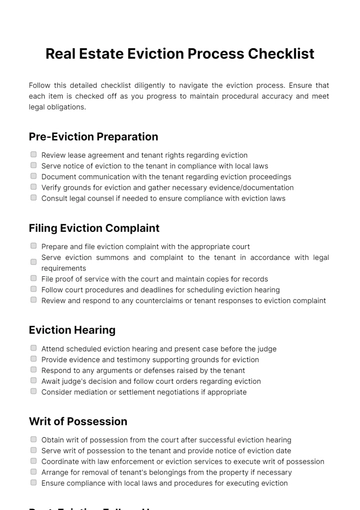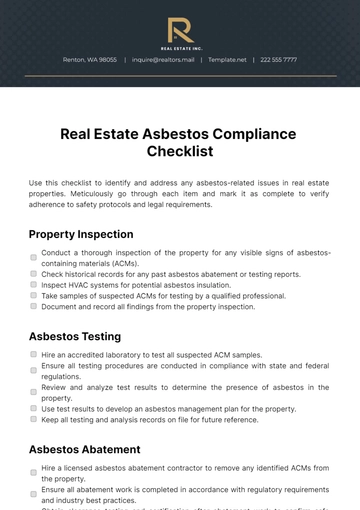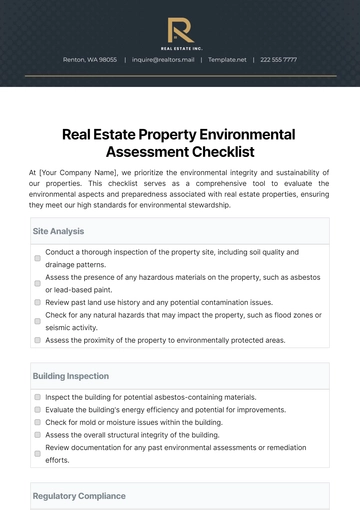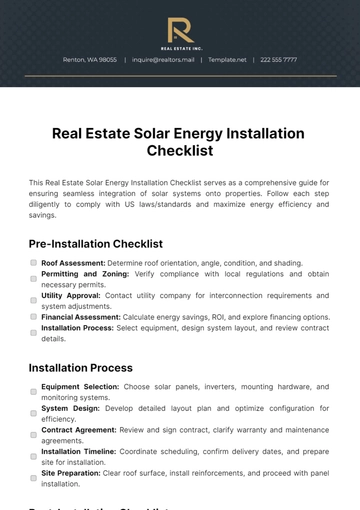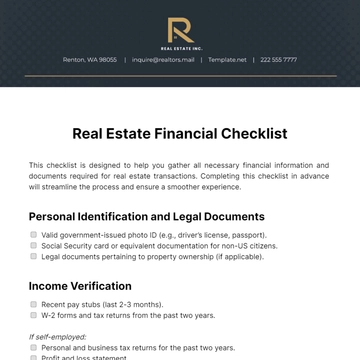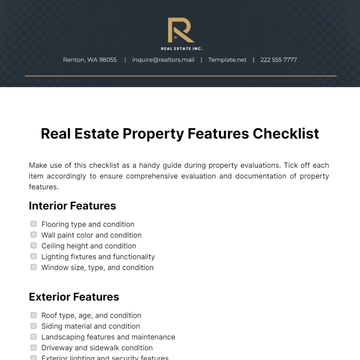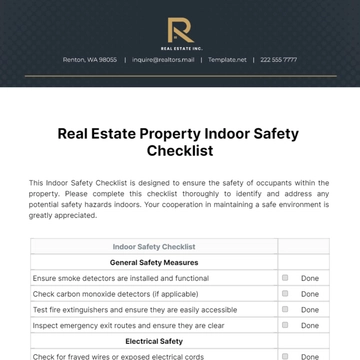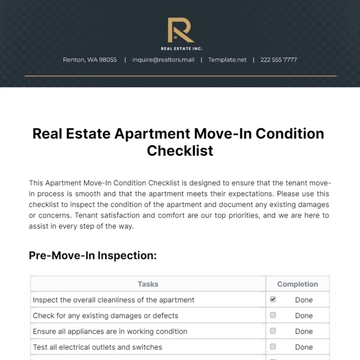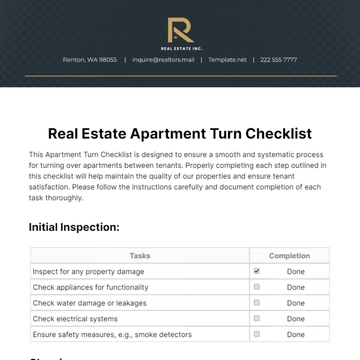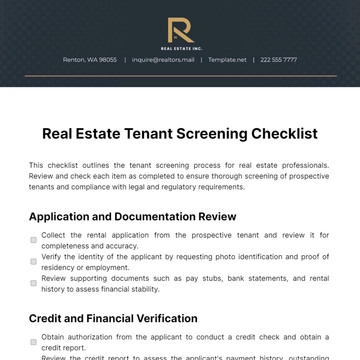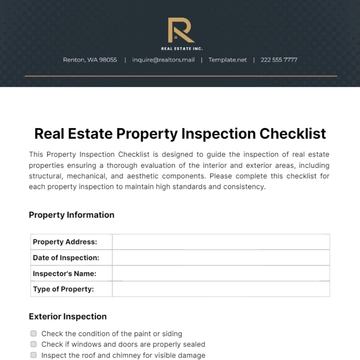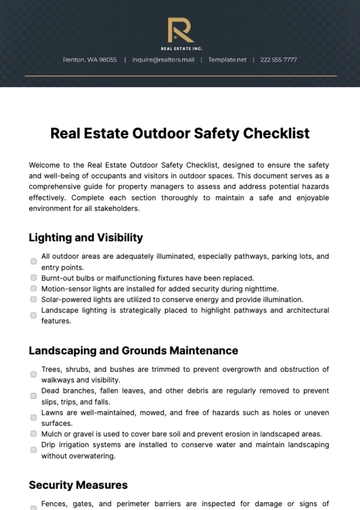Real Estate Site Assessment Checklist
This comprehensive checklist is meticulously designed to facilitate a thorough examination of real estate properties. It encompasses an array of critical aspects such as land topography, soil stability, presence of hazardous materials, compliance with zoning laws, and the potential environmental impact. This tool aims to uncover any factors that might influence the property's value, suitability for development, or compliance with regulatory standards, thus supporting well-informed decision-making in real estate ventures.
1. Land Topography
This section focuses on analyzing the physical features of the property. Understanding topography is crucial as it affects drainage, development potential, and the risk of natural disasters. This assessment ensures that the property's terrain is conducive to the envisioned construction or usage, mitigating any unforeseen challenges.
2. Soil Stability
Soil stability is paramount for any construction or development project, impacting both the feasibility and longevity of structures. This section delves into the soil's physical characteristics, highlighting areas of concern such as contamination, erosion, and composition, to prevent structural issues and ensure a solid foundation for development.
3. Hazardous Materials
Identifying and managing hazardous materials is critical to safeguarding human health and the environment. This section ensures the property is free from harmful substances such as asbestos, lead, and underground contaminants, which could pose significant risks and lead to costly remediation if overlooked.
4. Compliance with Zoning Laws
Adherence to zoning laws and building codes is non-negotiable in real estate development. This section evaluates the property's compliance with local regulations, ensuring any development aligns with legal requirements and permitted uses, thereby avoiding legal complications and ensuring project viability.
5. Environmental Impact Assessment
Assessing a property's environmental impact is essential for sustainable development and compliance with environmental regulations. This section scrutinizes the property's effect on local ecosystems, air and water quality, and overall environmental health, aiming to identify and mitigate any negative impacts.
Prepared By: [Your Name]
Company: [Your Company Name]
Real Estate Templates @ Template.net
